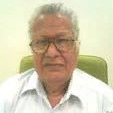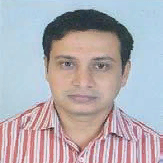International Journal of Image, Graphics and Signal Processing (IJIGSP)
IJIGSP Vol. 5, No. 11, 8 Sep. 2013
Cover page and Table of Contents: PDF (size: 917KB)
Tumour Delineation using Statistical Properties of The Breast US Images and Vector Quantization based Clustering Algorithms
Full Text (PDF, 917KB), PP.1-12
Views: 0 Downloads: 0
Author(s)
Index Terms
Probability image, vector quantization, codebook generation, connected components
Abstract
Breast cancer is most common and leading cause of death among women. With improvement in the imaging modalities it is possible to diagnose the cancer at an early stage moreover treatment at an early stage reduces the mortality rate. B-mode ultrasound (US) imaging is very illustrious and reliable technique in early detection of masses in the breast. Though it is complimentary to the mammography, dense breast tissues can be examined more efficiently and detects the small nodules that are usually not observed in mammography. Segmentation of US images gives the clear understanding of nature and growth of the tumor. But some inherent artifact of US images makes this process difficult and computationally inefficient. Many methods are discussed in the literature for US image segmentation, each method has its pros and cons. In this paper, initially region merging based watershed and marker-controlled watershed transforms are discussed and implemented. In the subsequent sections we proposed a method for segmentation, based on clustering. Proposed method consists of three stages, in first stage probability images and its equalized histogram images are obtained from the original US images without any preprocessing. In the next stage, we used VQ based clustering technique with LBG, KPE and KEVR codebook generation algorithm followed by sequential cluster merging. Last stage is the post processing, where we removed unwanted regions from the selected cluster image by labeling the connected components and moreover used morphological operation for closing the holes in the final segmented image. Finally, results by our method are compared with initially discussed methods.
Cite This Paper
H. B. Kekre, Pravin Shrinath "Tumour Delineation using Statistical Properties of The Breast US Images and Vector Quantization based Clustering Algorithms", IJIGSP, vol.5, no.11, pp.1-12, 2013. DOI: 10.5815/ijigsp.2013.11.01
Reference
[1]American Cancer Society, “Global Cancer Facts & Figures 2nd Edition, Atlanta: American Cancer Society; 2011.
[2]Ferlay J, Shin HR, Bray F, Forman D, Mathers C, Parkin DM, “GLOBOCAN 2008: Cancer Incidence, Mortality and Prevalence Worldwide IARC”, CancerBase No. 10, Lyon, France: International Agency for Research on Cancer, 2010.
[3]Thomas L Szabo, “Diagnostic Ultrasound Imaging: Inside out”, Elsevier Inc., pp 19-23, Sept 2004.
[4]K. J. W. Taylor, C. Merritt, C. Piccoli, R. Schmidt, G. Rouse, B. Fornage, E. Rubin, D. Georgian-Smith, F. Winsberg, B. Goldberg, and E. Mendelson, “Ultrasound as a complement to mammography and breast examination to characterize breast masses,” Ultrasound Med. Biol., vol. 28, pp. 19–26, Jan. 2002.
[5]Stavros, A., Thickman, D., Rapp, C., Dennis, M., Parker, S., and Sisney, G., “Solid breast nodules: Use of sonography to distinguish between benign and malignant lesions," Radiology 196, 122-134, 1995.
[6]Bosch, A., Kessels, A., Beets, G., Vranken, K., Borstlap, A., von Meyenfeldt, M., and van Engelshoven, J.,”Interexamination variation of whole breast ultrasound", British Journal of Radiology 76(905), 328-331 May 2003.
[7]Helmut Madjar, “Role of Breast Ultrasound for the Detection and Differentiation of Breast Lesions”, Breast Care, 5: pp 109–114, April 2010.
[8]Guita Rahbar, Angela C. Sai,Gail C Hansen, Jeffrey S.Prince, “Benign Versus Malignant Solid Breast Masses: US Differentiation”, 213: 889-894, Radiology, December 1999.
[9]K. Horsch, M.L. Giger, L.A. Venta, C.J. Vyborny, “Computerized diagnostic of breast lesions on ultrasound”, Medical Physics, vol. 29, no.2, pp 157–164, Feb 2002.
[10]J. Alison Noble, Djamal Boukerroui, “Ultrasound Image Segmentation: A Survey”, IEEE Transactions on Medical Imaging, Vol. 25, No. 8, pp 987-1010, Aug 2006.
[11]Guofang Xiao, Michael Brady, J. Alison Noble, Yongyue Zhang, “Segmentation of Ultrasound B-Mode Images With Intensity Inhomogeneity Correction, IEEE TRANSACTIONS ON MEDICAL IMAGING, VOL. 21, NO. 1, pp 48-57, JANUARY 2002.
[12]D.Boukerroui, O. Basset, A.Noble, and A. Baskurt, G´erard Gimenez, “A Multiparametric and Multiresolution Segmentation Algorithm of 3-D Ultrasonic Data”, IEEE transactions on ultrasonics, ferroelectrics, and frequency control, Vol 48 , No1 pp 64-77, 2002.
[13]D.Boukerroui, O. Basset, A.Noble, and A. Baskurt, “Segmentation of ultrasound images–– multiresolution 2D and 3D algorithm based on global and local statistics”, Pattern Recognition Letters Vol 24 , pp 779–790, 2003, Elsevier, Science Direct, 2003.
[14]Y.L. Huang, D.R. Chen, “Watershed segmentation for breast tumor in 2-D sonography”, Ultrasound Med. Biol. Volume 30, Issue 5, pp 625-632, May 2004.
[15]Yanni Su, Yuanyuan Wang, Jing Jiao, Yi Guo, “Automatic Detection and Classification of Breast Tumours in Ultrasonic Images Using Texture and Morphological Features”, Volume 5, pp 26-37, The Open Medical Informatics Journal, 2011.
[16]Dar-Ren Chen, Yu-Len Huang, Sheng-Hsiung Lin “Computer-aided diagnosis with textural features for breast lesions in sonograms” Computerized Medical Imaging and Graphic, Elsevier, vol. 35, pp- 220–226, 2011.
[17]D. R. Chen, R. F. Chang, W. J. Kuo, M. C. Chen, and Y. L. Huang,“Diagnosis of breast tumors with sonographic texture analysis using wavelet transform and neural networks,” Ultrasound Med. Biol., vol. 28, no. 10, pp. 1301–1310, Oct. 2002.
[18]Bo Liu, H.D.Cheng, JianhuaHuang, JiaweiTian, XianglongTang, JiafengLiu, “ Probability density difference-based active contour for ultrasound image segmentation”, 43, 2028–2042, Pattern Recognition, Science Direst, Elsevier, 2010.
[19]Jin-Hua Yu, Yuan-Yuan Wang, Ping Chen, Hui-Ying Xu, “ Two-dimensional Fuzzy Clustering for Ultrasound Image Segmentation”, published in the proceeding of IEEE International Conference on Bioinformatics and Biomedical Engineering, pp 599-603,1-4244-1120-3, July 2007.
[20]Chang Wen Chen,”Image Segmentation via Adaptive k–Mean Clustering and Knowledge-Based Morphological Operations with Biomedical Applications”, IEEE TRANSACTIONS ON IMAGE PROCESSING, VOL. 7, NO. 12, PP 1673-1683, DECEMBER 199.
[21]Luc Vincent , Pierre Soille, “ Watershed in Digital Space: An Efficient Algorithm Based on Immersion Simulations”, IEEE Transaction on Pattern Analysis and Machine Intelligence, pp 583-598, Vol 13, No 6, 1991.
[22]Chung-Ming-Cheng, Henry Horning-Shing-Lu, Bin-Shin Su, “Cell-Based Region Competition for Ultrasound Image Segmentation”, Journal of Medical and Biomedical Engneering, pp 59-66, 22(2), 2002.
[23]Amr R. Abdel-Dayem, Mahmoud R. EI-Sakka1, Aaron Fenster2, “Watershed Segmentation for Carotid Artery Ultrasound Images”, 3rd ACS /IEEE International Conference, 2005.
[24]Deka B, Ghosh D, “ Ultrasound Image Segmentation using Watershed and Region Merging”, IET International Conference on Visual Information Engineering, IEEE xplore, pp 110-115, 2006.
[25]W. Gomez, L. Leija, W.C.A.Pereira, A.F.C. Infantosi, “Segmentation of Breast Nodules on Ultrasonographic Images Based On Marker-Controlled Watershed Transform”, Computation Systems, Vol 14, No 2, 2010.
[26]Samual H. Lewis, Aijuan Dong, “Detection of Breast Tumor Candidates using Marker-Controlled Watershed and Morphological Analysis”, Southwest Symposium (SSIAI), pp 1-4, IEEE International Conference, 2012.
[27]R. M. Gray, “Vector quantization”, IEEE ASSP Magazine., pp. 4-29, Apr.1984.
[28]Pamela C. Cosman, Karen L. Oehler, Eve A. Riskin, and Robert M. Gray, “Using Vector Quantization for Image Processing”, Proceedings of the IEEE, pp- 1326-1341,Vol. 81, No. 9, September 1993.
[29]W. H. Equitz, "A New Vector Quantization Clustering Algorithm," IEEE Trans. on Acoustics, Speech, Signal Proc., pp 1568-1575. Vol-37,No-10,Oct-1989.
[30]Huang,C. M., Harris R.W., “ A comparison of several vector quantization codebook generation approaches”, IEEE Transactions on Image Processing, pp 108 – 112, Vol-2,No-1, January 1993.
[31]Qiu Chen, Kotani, K., Feifei Lee, Ohmi, T., “VQ-based face recognition algorithm using code pattern classification and Self-Organizing Maps”, 9th International Conference on Signal Processing, pp 2059 – 2064, October 2008.
[32]C. Garcia and G. Tziritas, “Face detection using quantized skin color regions merging and wavelet packet analysis,” IEEE Trans. Multimedia, vol. 1, no. 3, pp. 264–277, Sep. 1999.
[33]H. B. Kekre, Tanuja K. Sarode, Bhakti Raul, “Color Image Segmentation using Kekre’s Algorithm for Vector Quantization International Journal of Computer Science (IJCS), Vol. 3, No. 4, pp. 287-292, Fall 2008. Available at: http://www.waset.org/ijcs.
[34]H. B. Kekre, Tanuja K. Sarode, Saylee Gharge, “Detection and Demarcation of Tumor using Vector Quantization in MRI images”, International Journal of Engineering Science and Technology, Vol.1, Number (2), pp.: 59-66, 2009. Available online at: http://arxiv.org/ftp/arxiv/papers/1001/1001.4189.pdf.
[35]H. B. Kekre, Dr.Tanuja Sarode, Ms.Saylee Gharge, Ms.Kavita Raut, “Detection of Cancer Using Vecto Quantization for Segmentation”, Volume 4, No. 9, International Journal of Computer Applications (0975 – 8887), August 2010.
[36]H.B.Kekre, Tanuja K. Sarode, Sudeep D. Thepade, “Color Texture Feature based Image Retrieval using DCT applied on Kekre’s Median Codebook”, International Journal on Imaging (IJI), Available online at www.ceser.res.in/iji.html.
[37]Pamela C. Cosman, Karen L. Oehler, Eve A. Riskin, and Robert M. Gray, “Using Vector Quantization for Image Processing”, Proceedings of the IEEE, pp- 1326-1341,Vol. 81, No. 9, September 1993.
[38]R. M. Gray, “Vector quantization”, IEEE ASSP Magazine., pp. 4-29, Apr.1984.
[39]Yoseph Linde, Andres Buzo, Robert M.Gray, “An Algorithm for Vector Quantizer Design”, IEEE Transaction On Communication, pp 84-95, Vol. Com-28, No. 1, January 1980.
[40]H.B.Kekre, Tanuja K. Sarode, “Two-level Vector Quantization Method for Codebook Generation using Kekre’s Proportionate Error Algorithm”, International Journal of Image Processing, Volume (4): Issue (1).
[41]H. B. Kekre, Tanuja K. Sarode, “An Efficient Fast Algorithm to Generate Codebook for Vector Quantization,” First International Conference on Emerging Trends in Engineering and Technology, ICETET-2008, held at Raisoni College of Engineering, Nagpur, India, 16-18 July 2008, Avaliable at online IEEE Xplore.
[42]H. B. Kekre, Tanuja K. Sarode, “New Clustering Algorithm for Vector Quantization using Rotation of Error Vector”, (IJCSIS) International Journal of Computer Science and Information Security, Vol. 7, No. 3, 2010.

